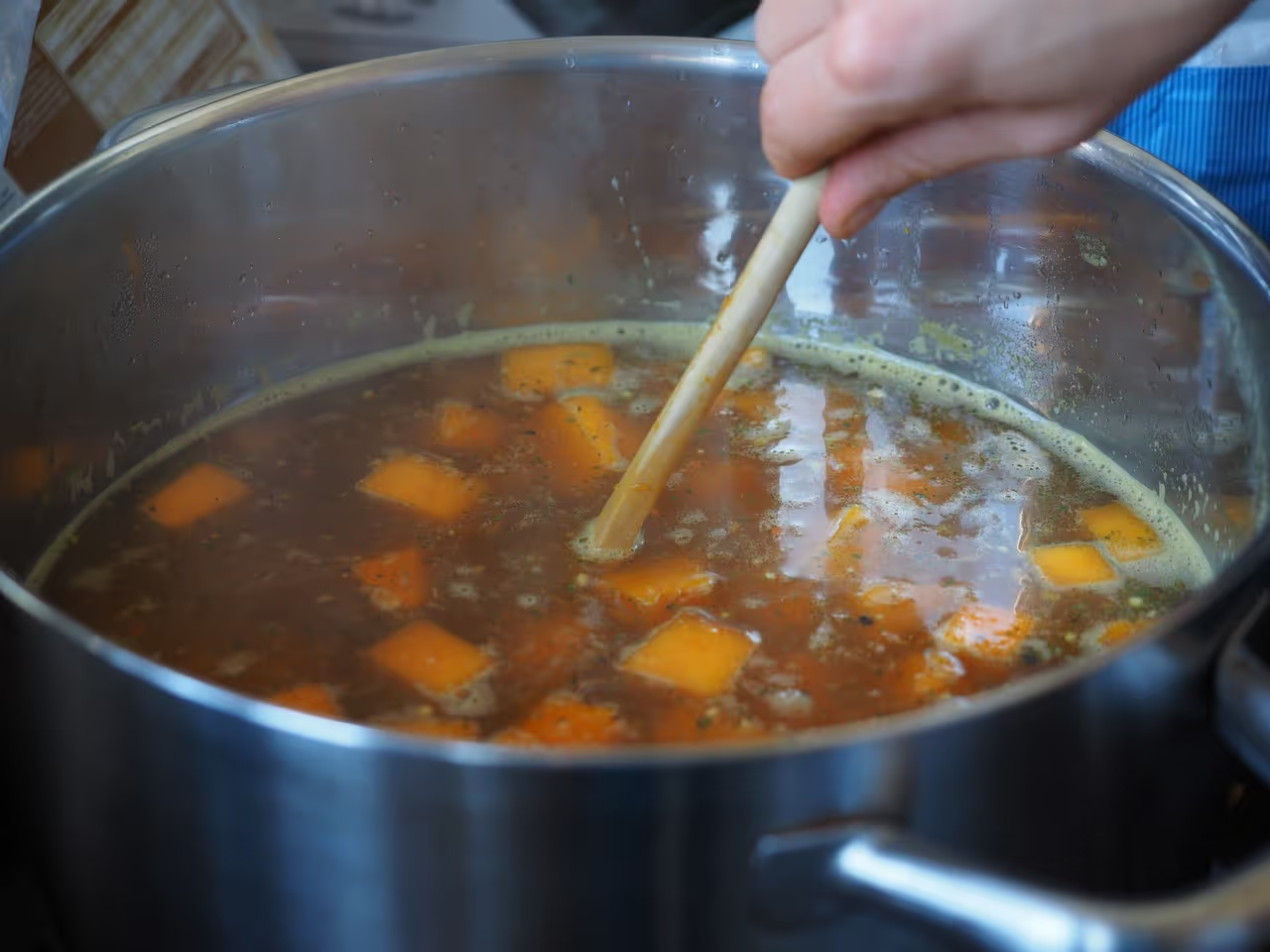Don’t Waste It, Stock It: How to Use Up Your CSA Produce in a Delicious Way

If you’re looking for a way to reduce food waste and save money, making your own vegetable stock from scraps is a great idea. Vegetable stock is a versatile ingredient that can add flavor and nutrition to soups, stews, sauces, grains, and more. Plus, it’s easy to make and freeze for later use. Here’s how to do it.
What You Need
To make vegetable stock, you’ll need a large pot, a strainer, and some freezer-safe containers or bags. You’ll also need 4-6 cups of vegetable scraps, which you can collect from your regular cooking or buy fresh if needed. The key to a good brother is to have a variety of different types of veggie scraps to produce a stock with a deeper flavor. Some of the best scraps for stock are:
- Celery leaves and ends, or even whole stalks
- Carrot tops, ends, and peels
- Onion ends and skins, or entire onions cut in half
- Garlic tops, ends, and peels
- Parsley stems
- Mushroom stems
- Tomato ends
- Corn cobs
- Pea pods
- Fennel, leaves or root
- Leeks, green and white parts
- Winter or summer squash peels
You can also jazz up your broth with some herbs & aromatics, such as;
- Garlic
- Ginger
- Thyme
- Basil
- Turmeric
- Whole black peppercorns
- Bay leaf
.avif)
Be careful if you’re using strongly flavored herbs, such as rosemary, or hot peppers. It doesn’t take much to overwhelm the flavor of your broth with these kinds of ingredients, which will carry over to anything you make with the broth.
You’ll want to avoid using vegetables that are bitter or strongly flavored, such as;
- Cruciferous vegetables like cabbage, broccoli, cauliflower, Brussels sprouts, kale, collards, or chard can give your broth a bitter flavor.
- Starchy vegetables such as potatoes will result in a cloudy broth.
- Beets will turn your broth red and give it an unpleasant earthy flavor.
- Rotten or mold vegetables obviously need to be avoided here. This is a great way to use up excess veggies, but not if they’re well past their prime.
How to Make It
To make vegetable stock from scraps, follow these simple steps:
- Gather up 4-6 cups of veggie scraps. You can use fresh or frozen. If you’re using frozen scraps, you don’t need to defrost them first.
- Place the scraps in a large pot and fill it with cold water until they are just covered (about 8-10 cups). You can also add some aromatics for extra flavor, such as a bay leaf, some black peppercorns, and a splash of vinegar (this helps to extract more nutrients from the scraps).
- Bring the water to a boil over high heat, then lower the heat and simmer the stock for at least 30 minutes or up to 2 hours. The longer you simmer it, the more flavorful it will be. If you’re using frozen scraps, you’ll definitely want to simmer it for longer than if using fresh scraps.
- Strain the stock through a fine-mesh strainer or a cheesecloth-lined colander. Discard the solids or compost them.
- Let the stock cool slightly before transferring it to freezer-safe containers or bags. Leave some space at the top of each container or bag to allow for expansion when freezing.
How to Freeze It
To freeze vegetable stock for later use, follow these tips:
- Label each container or bag with the name of the stock (vegetable), the date of freezing (month/year), and the amount of stock (cups or liters).
- Refrigerate the stock until it is completely cool before placing it in the freezer. This will prevent ice crystals from forming and affecting the quality of the stock.
- Freeze the stock in different portions depending on how you plan to use it. For example, you can freeze it in quart-sized containers for soups and stews; in pint-sized containers for sauces and grains; in half-pint-sized containers for sautés and stir-fries; or in ice cube trays for small amounts of flavoring.
- To thaw frozen stock, place it in the refrigerator overnight or run cold water over the container or bag until you can remove the frozen block of stock. Then heat it in a saucepan over medium heat until it is liquid again.
- Use thawed stock within 3 to 4 days for best quality and safety.
Making and freezing vegetable stock from scraps is a smart way to use up your leftover vegetables and create a delicious base for your dishes. Try it yourself and see how easy and rewarding it is!
